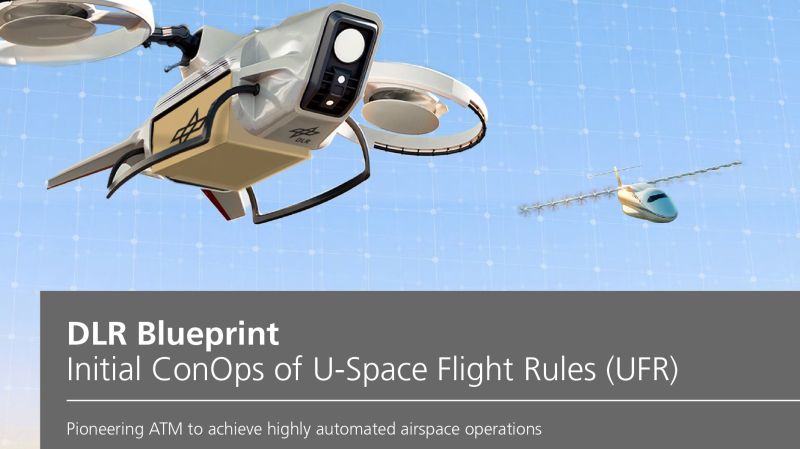Germany’s DLR Institute of Flight Guidance has developed a Blueprint titled “U-space Flight Rules” (UFR). This framework of new flight rules aims to establish standardized rules for all airspace users within U-spaces, seamlessly integrating UAS alongside traditional crewed aircraft.
Under the UFR Blueprint, airspace users will operate within designated UFR operational blocks, each mandating specific U-space services to meet technical and operational airspace requirements. These services are pivotal in ensuring the safety and reliability of UAS operations within U-space airspaces.
DLR says this living document will evolve with feedback, exploring transitions between UFR and traditional rules, and enhancing safety for all airspace users.
This ConOps proposes UFR to follow a stepwise implementation depending on the level of automation that each U-space will provide. Based on the advancements of the four different U-space levels, increased automation of aircraft capabilities as well as increased digital information exchange and connectivity of U-space services will lead to more automated procedures in ATM systems and U-spaces. In U-space airspaces, this ConOps suggests airspace users to fly under three different operational blocks X1 to X3. For each UFR operational block, a range of U-space services will be mandatory for airspace users to fulfil the technical and operational requirements of each U-space. Additionally, UFR operational block X0 is intended to apply exclusively for UAS operations that cannot conform to VFR or IFR in airspace segments which have not been declared as U-space yet. This implies that all UAS operations will follow UFR principles, regardless of whether they operate in U-space airspace or not. In summary, UFR are envisioned to apply to all airspace users within U-space airspaces and – depend on U-space services and aircraft automation capabilities, – complement existing flight rules, – ensure fair and common airspace access, – provide operational flexibility, – increase safe and efficient air traffic procedures, – enable increasingly automated air traffic procedures while providing o common flight information surveillance, o cooperative traffic interaction, o collaborative performance-based separation.
Access the document here
For more information visit:
www.dlr.de




